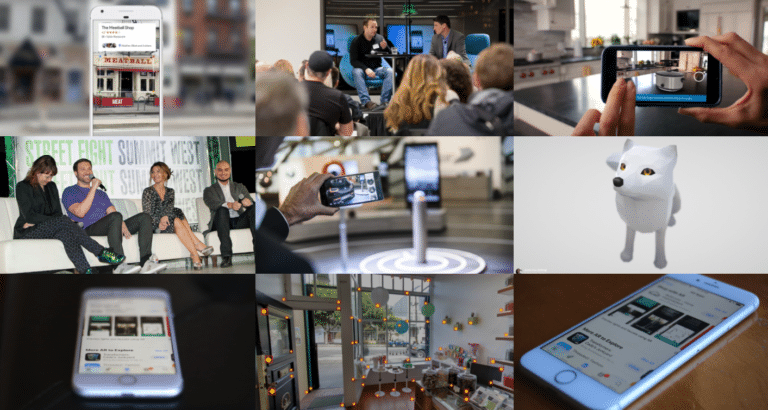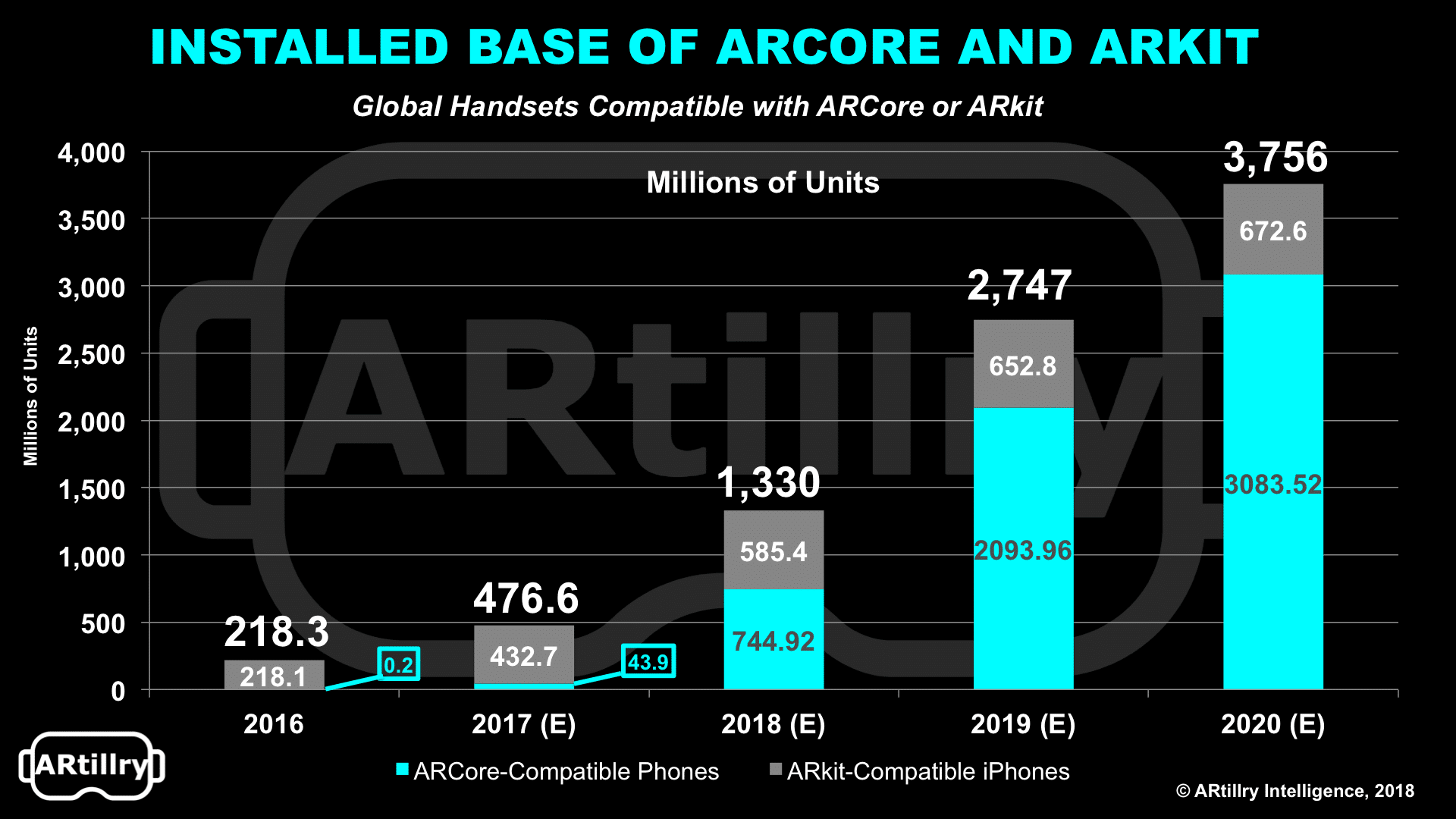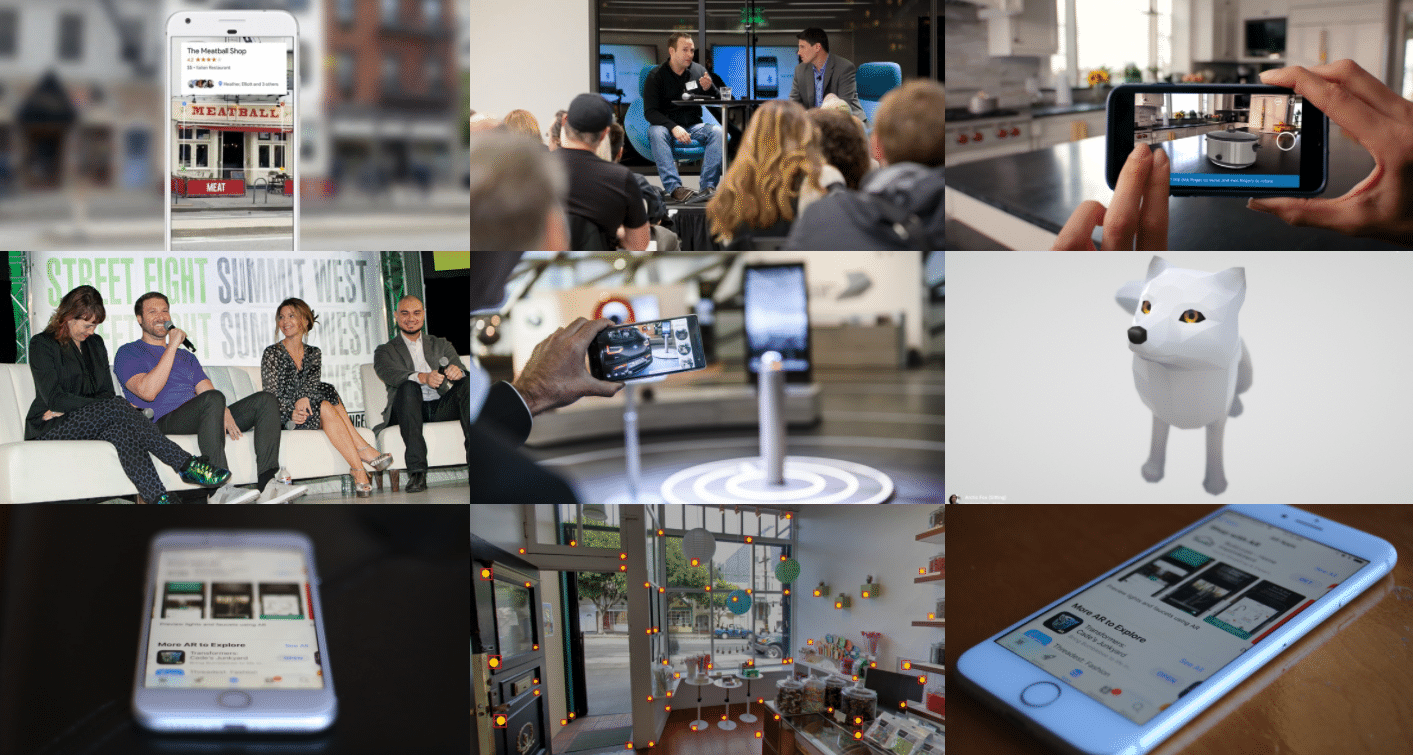
This post is excerpted from ARtillry’s latest Intelligence Briefing: Mobile AR: App Strategies and Business Models. It includes some of its data and takeaways. More can be previewed here and subscribe to access the full report.
When looking at AR product strategies – or any emerging tech product for that matter – it’s important to consider “native thinking.” This is the art of developing for the nuances of the form factor rather than shoehorning legacy formats. It’s been an important lesson in past technological shifts.
Early television ads for example often showed someone standing and reading a script for a given product – usually Ovaltine, Lucky Strike or other 1940’s fare. The reason: that’s the way it was done in radio. It took a while for TV ads to grow into their own skin and develop optimal formats.
Going back further, the telephone was first devised as a way for telegraph operators to talk to each other in real time. But its peer-to-peer orientation was eventually realized, thus replacing the telegraph medium it was designed to improve (then ironically reverting back to transmitting “texts”).
More recently, the smartphone era launched with a flood of low-quality apps that replicated websites. Similarly, ill-devised content formats — such as banners ads — even persist to this day. It took ten years to come up with truly native ad formats like Snapchat Stories or branded geofilters.
Native AR
This all leads up to the question of how products will develop in AR. Legacy formats like rectangular components that fit a smartphone screen could be out of place. The three-dimensional world doesn’t occur in rectangles. And in early days, we’ll see misfires just like we saw with early iPhone apps.
“In 2007 when Apple launched the iPhone, most of the apps were flashlights,” said Escher Reality CTO Diana Hu at TechCrunch Disrupt. “People didn’t know what to do yet. And there’s going to be this phase of learning. There’s a genesis of any technology when people need to experiment.”
The reason this is important is to not miss the unique opportunities that AR offers. It has the potential to create truly novel search, discovery and social use cases that no one has thought of yet. But before we see AR find that native footing, there will be lots of misfires.
“As far as AR apps and consumer-based products, I think you’re going to see a lot of crap over the next year or two,” said Niantic CTO Phil Keslin during the same Disrupt panel. “But you’ll see some nuggets of creative genuine things that will spark something that will truly be amazing.”
Relying once again on historical analysis, the native opportunity is perhaps best characterized by looking at successful mobile apps. And there, we see the most notable examples such as Uber and Waze carry a common trait: they each wouldn’t have worked on the previous form factor, the PC.
“You couldn’t make an Uber style app when it was on a PC,” said Escher Reality CEO Ross Finman on the same Techcrunch Disrupt panel. “It only made sense after a mobile platform came out. Now it’s about understanding what are the new things you can do with the mobile platform for AR.

AR-First and AR-Only
Native thinking in AR is also known as “AR-first.” And to once again apply historical lessons to this report’s analysis, we’ve learned a similar lesson in the smartphone era. This began about ten years ago when the term “mobile first” became a battle cry for reforming app design principles.
And the same benefits will apply to AR. But taking that a step further, as much success can flow from “AR-first” thinking, greater traction can result from “AR-only.” In other words, questions should be asked of any AR app: Could it exist without AR? Is AR critical to its functionality or incremental?
When applying this thinking to AR features and apps, there are examples that represent best and worst practices. Furniture or car visualization apps such as BMW iVisualizer are examples of AR-only thinking: They solve a real pain point — personalizing large items — and are only possible in AR.
On the other side of this spectrum is the NBA app that lets players flick their phone to shoot free throws at a graphical hoop superimposed on the floor. It’s moderately fun for a bit, but its functionality is based more in the phone’s accelerometer than AR. It doesn’t need to be in AR.
“When I saw Pokémon Go, I thought ‘great,’ my kids played it… but they turned off augmentation,” said Unternehmertum VC Partners’ Johannes von Borries at last Fall’s AWE Europe conference. “So it was not augmented reality, it was a GPS game. We have to think, ‘where’s the real value?’”

If It Ain’t Broke
Another form of AR-only thinking is what we like to call the “if it ain’t broke,” test. If an AR app fills a gap that wasn’t a pain point for anyone, it could be a solution in search of a problem. This principle killed many mobile payment apps because cash and credit cards aren’t a large-enough pain point.
Applied to AR, consider an app that displays karaoke lyrics at a bar – an app idea we recently heard pitched. The functionality could be additive in that it displays lyrics in front of one’s field of view, but only incrementally so. The current technology – a flat screen monitor – already does the job well.
At early stages of AR, there will be a lot of this incremental innovation. But we’ll eventually get to the true AR value when the first breakout AR-only app catches fire. It was that same thinking that brought us apps like Uber, which at the time was “mobile-only.” As explored above, it wouldn’t work on PCs.

Silicon Valley Effect
Part of the challenge also comes down to the classic “Silicon Valley effect.” Being immersed in a tech culture, it’s hard to detach and put ourselves in the shoes of mainstream consumers. But the challenge is to solve human problems and pain points, rather than engineering feats.
They aren’t mutually exclusive, but the former should lead the latter. Put another way, don’t be a “hammer searching for nails.” AR should improve lives primarily and impress industry peers secondarily. We recommend season 3, episode 9 of HBO’s Silicon Valley for more on this principle.
“What are other problems where AR finally helps bridge the gap?” Samsung Next’s Jacob Lowenstein posed at the AWE Europe conference last Fall. “Work backwards from there. Because if you’re going technology-first you’re going to end up walking into a door.”
For a deeper dive on AR & VR insights, see ARtillry’s new intelligence subscription, and sign up for the free ARtillry Weekly newsletter.
Disclosure: ARtillry has no financial stake in the companies mentioned in this post, nor received payment for its production. Disclosure and ethics policy can be seen here.

